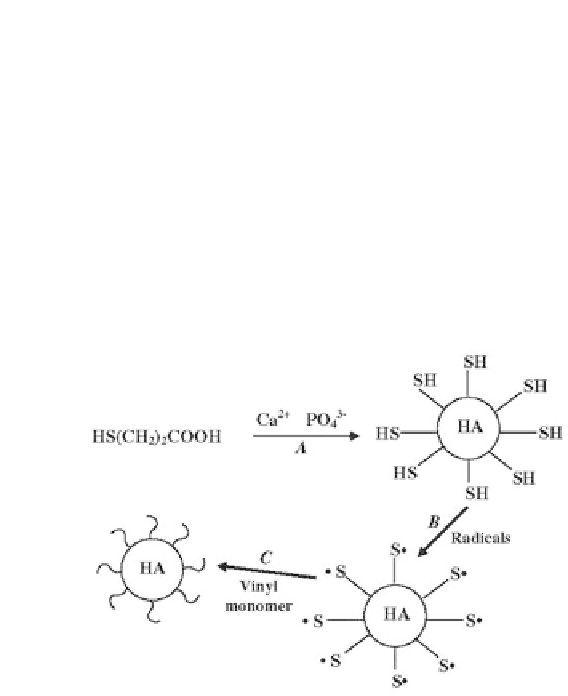Biomedical Engineering Reference
In-Depth Information
the sulfur-centered radicals on the HA surfaces (Fig. 6.8B), which
initiated the surface grafting polymerization of ethylene glycol
methacrylate phosphate (Fig. 6.8C) [1154]. Other examples might
be found in literature [144, 509, 510, 656, 1147-1153]. In general,
the purpose of surface modifying is not only to guarantee the even
distribution of calcium orthophosphate particles at a high loading
level in the matrix but also to prevent or delay the debonding process
of calcium orthophosphate particles from the matrix. Obviously, all
surface modifiers must satisfy several biomedical requirements,
such as no toxicity, good biocompatibility and no changes in the
biological or physico-chemical properties of the fillers.
Figure 6.8
Surface modification of HA particles by grafting polymerization
according to Lee et al. [1154]: (A) surface thiol functionalized
HA, (B) sulfur-centered radical on HA surface, (C) surface
grafting polymerization of ethylene glycol methacrylate
phosphate. Reprinted from Ref. [99] with permission.
Addition of adhesion-promoting agents might be an alternative
to improve the interaction between the fillers and the matrix.
For example, Morita et al. incorporated 4-methacryloyloxyethyl
trimellitate anhydride to promote adhesion of the polymer to HA
[1155]. In another study, phosphoric ester was added to the liquid
component of the formulation [1156]. Both the strength and the
affinity index of biocomposites were found to increase, probably due
to the effects of co-polymerization.
Possible interactions between BCP and HPMC have been
investigated in IBS composites [900, 901, 1157]. After mixing, there


Search WWH ::

Custom Search